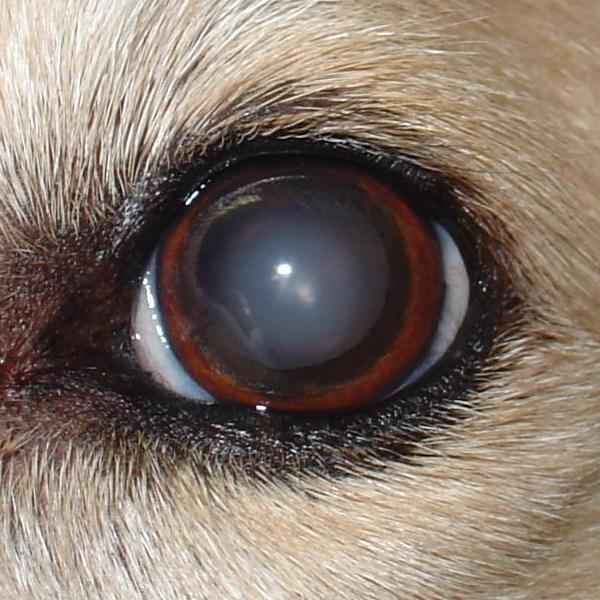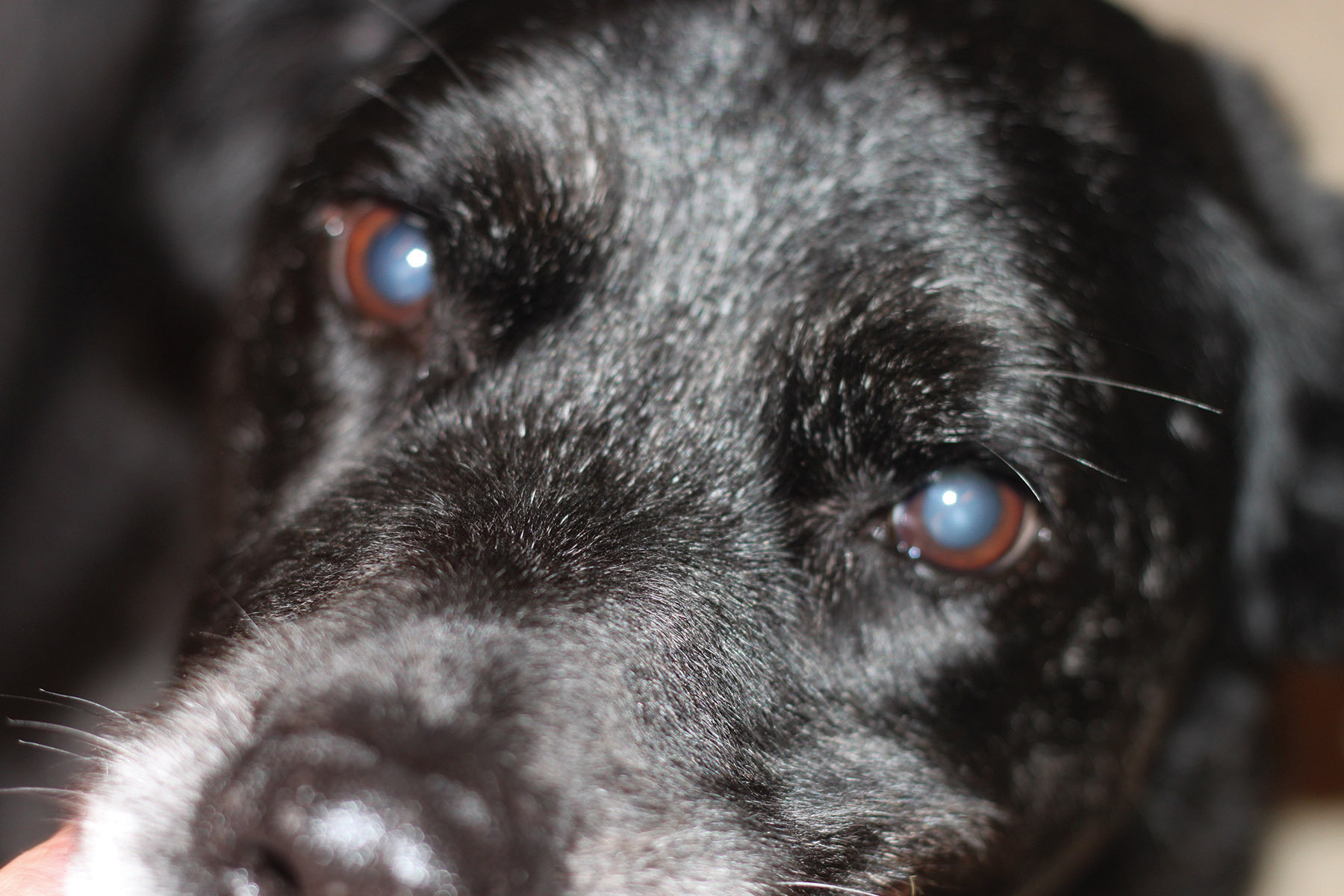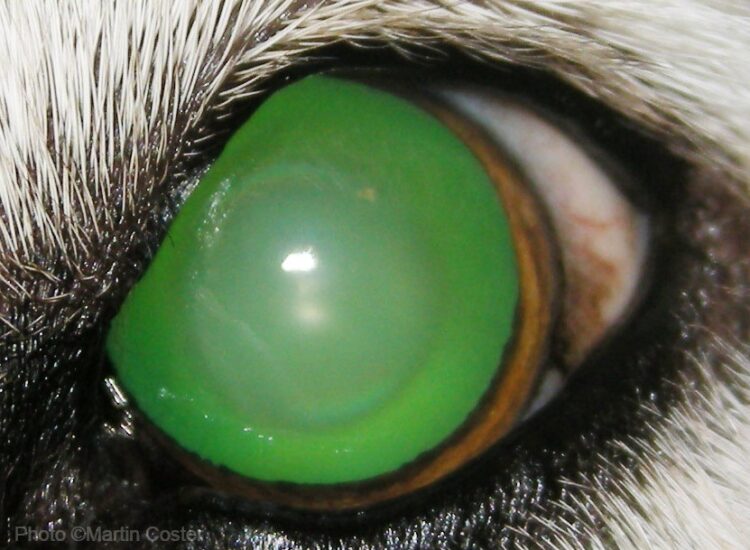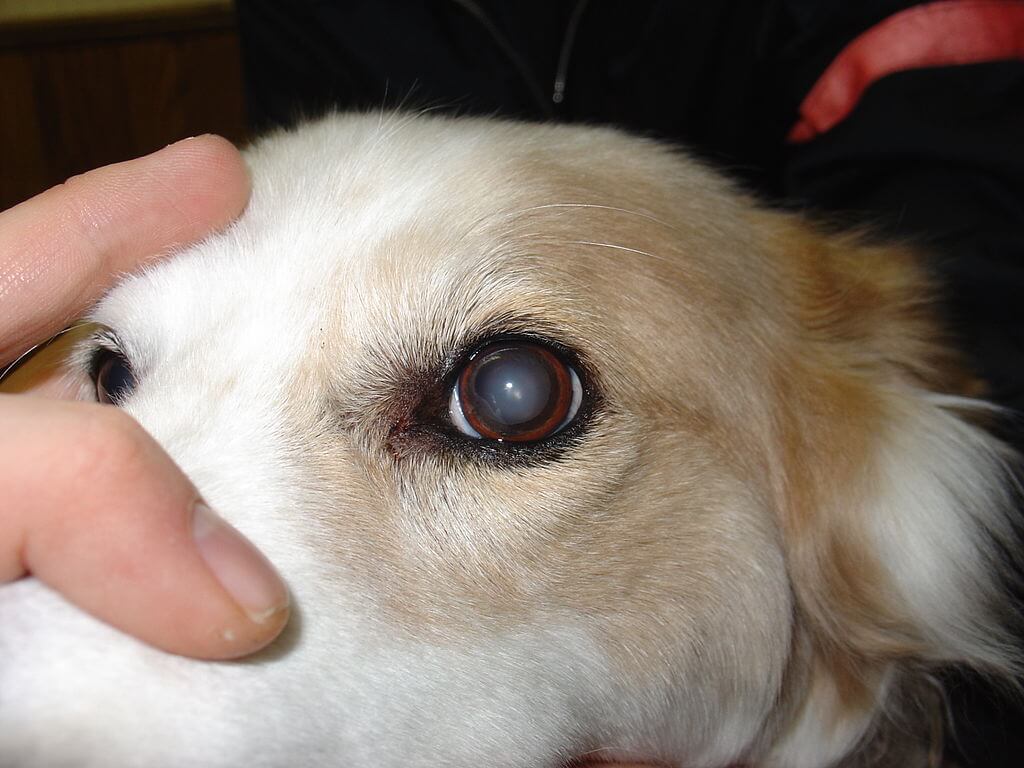
Image Nuclear sclerosis and early cataract formation, dog Merck Veterinary Manual
Lenticular sclerosis, also known as nuclear sclerosis, is an age-related eye condition that causes a hazy or blueish appearance on the lens of the eyes. Although it can impair a dog's vision to some degree, this is a harmless condition that requires no treatment and does not lead to blindness .

Coping with Cataracts In Our Canine Companions Berkeley, CA Patch
As dogs age, they almost always develop a bluish haze in their eyes called lenticular (or nuclear) sclerosis. As your dog ages, you may notice a bluish haze in his eyes. This is called lenticular sclerosis and is a normal part of aging. However, a veterinarian needs to make the diagnosis and rule out cataracts, which do require treatment.

Nuclear Sclerosis in Dogs Causes, Symptoms, and Treatment
This condition is called nuclear sclerosis and is responsible for the cloudy-eyed appearance of older dogs. The lenses with nuclear sclerosis may look cloudy but they are still clear and the dog can still see through them; these are not cataracts.

caninenuclearsclerosis Walkerville Vet
Nuclear sclerosis usually gives your dog's eyes a cloudy, bluish discoloration, unlike cataracts, which are white and opaque. More important, nuclear sclerosis (also called lenticular.

Nuclear Sclerosis in Dogs What Owners Must Know Top Dog Tips
According to veterinary ophthalmologists like Washington-based Northwest Animal Eye Specialists, nuclear sclerosis in dogs can begin as early as middle age (around six for most canines)..

Esclerosis nuclear en perros causas, síntomas y tratamiento
In fact, the likelihood of a dog developing lenticular sclerosis has been estimated as high as 50% for dogs over 9 years of age, and even up to 100% for dogs over 13 years of age .

Why Are My Dog’s Eye’s Cloudy? Nuclear Sclerosis vs. Cataracts
Published: May 31, 2023 | 4 Minutes cataracts cloudy eye eye health Dogs don't see the world the same way as humans. For example, dogs can't see the full rainbow of colors most people can. At a.

Top Ophthalmology Tips for the Practicing Veterinarian • MSPCAAngell
Cataracts are opacities of the lens or its capsule and should be differentiated from the minor lens imperfections in young dogs (seen on slit-lamp biomicroscopy) and the normal increase in nuclear density (nuclear sclerosis) that occurs in older animals.

Canine Cataracts Does My Dog Have Cataracts? The Pet Hospitals
Nuclear sclerosis in dogs is an extremely common condition, and typically is not cause for worry. It is a purely cosmetic condition, which does not cause any discomfort for your dog, and does not cause significant changes in vision. Veterinary visits should still be scheduled when your dog begins showing signs of the condition - primarily to.

What Does Nuclear Sclerosis Look Like In Dogs
The Difference Nuclear sclerosis is commonly confused with cataracts but is different in both the cause and effect on the patient. This age-related change is common in dogs (50% of dogs over approximately 9 years of age 2) and cats, as continued formation of normal lens fibers compresses the central nucleus, leading to increased nuclear density.

Canine Lens and Cataract Formation Veterian Key
The older lens, being denser, appears cloudy. This condition is called nuclear sclerosis and is responsible for the cloudy-eyed appearance of older dogs. The lenses with nuclear sclerosis may look cloudy but they are still clear and the dog can still see through them; these are not cataracts.

Nuclear Sclerosis Vs Cataracts In Dogs
Vets believe that the main reason for nuclear sclerosis is that the lens fibers are produced throughout the dog's life. As the central part of the lens gets compressed by new fibers from the side, the central part gets hardened and opaque. How do vets diagnose nuclear sclerosis in dogs?

Nuclear Sclerosis in Dogs What Owners Must Know Top Dog Tips
Lenticular changes are common in aging dogs. Nuclear sclerosis, an increased density and hardening of the lens nucleus associated with a progressively gray opacity in the center of the lens, is found in all dogs older than 7 years (FIGURE 8A). 30 Nuclear sclerosis is visible to the naked eye as cloudiness of the lens; thus, owners often present.
/black-dog-1208647489-c5aeaedde8664edda3fcb36686db4dce.jpg)
Lenticular (Nuclear) Sclerosis in Dogs
Nuclear sclerosis, or hardening of the lens nucleus, is a consistent, age-related finding in dogs older than 7 years of age. Clinically, nuclear sclerosis appears as a spherical, opalescent haze to the central nucleus of the lens. The condition does not obscure the tapetal reflection, impede vision, or preclude examination of the retina.

Is It Nuclear Sclerosis or Cataracts? Pet Eye Problems
Nuclear sclerosis is an age-related change in the density of the crystalline lens nucleus that occurs in all older animals. [1] It is caused by compression of older lens fibers in the nucleus by new fiber formation. The denser construction of the nucleus causes it to scatter light.

nuclear sclerosis Avonvale Blog
Nuclear sclerosis generally occurs in middle-aged or older dogs - typically those over the age of 7. Any breed can be affected, and increased exposure to UV radiation (typically sunlight) may make the condition happen more rapidly.